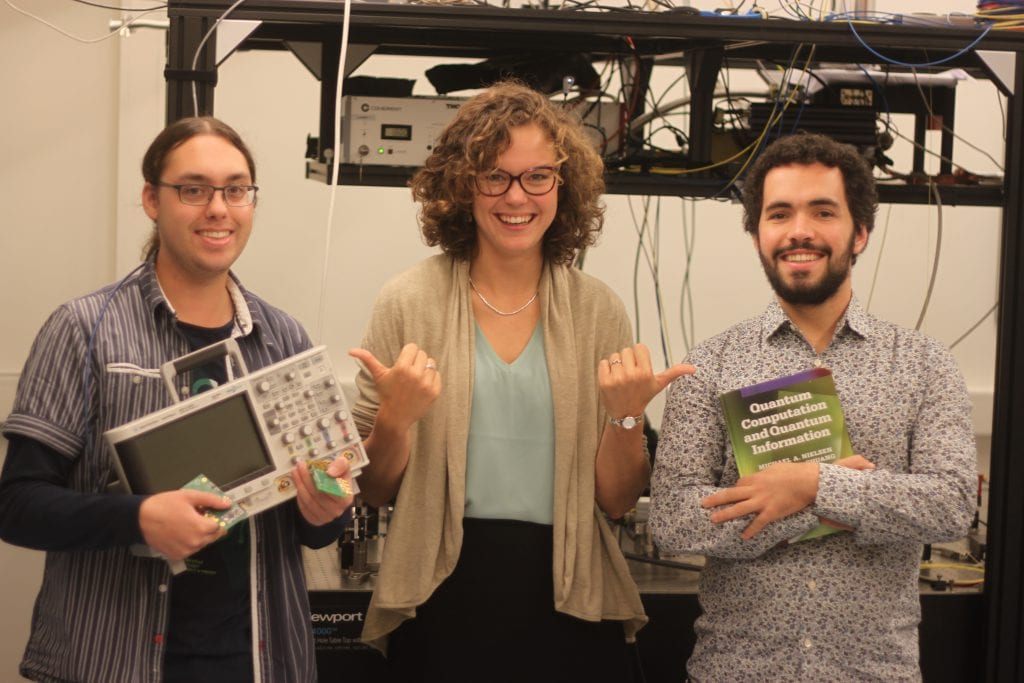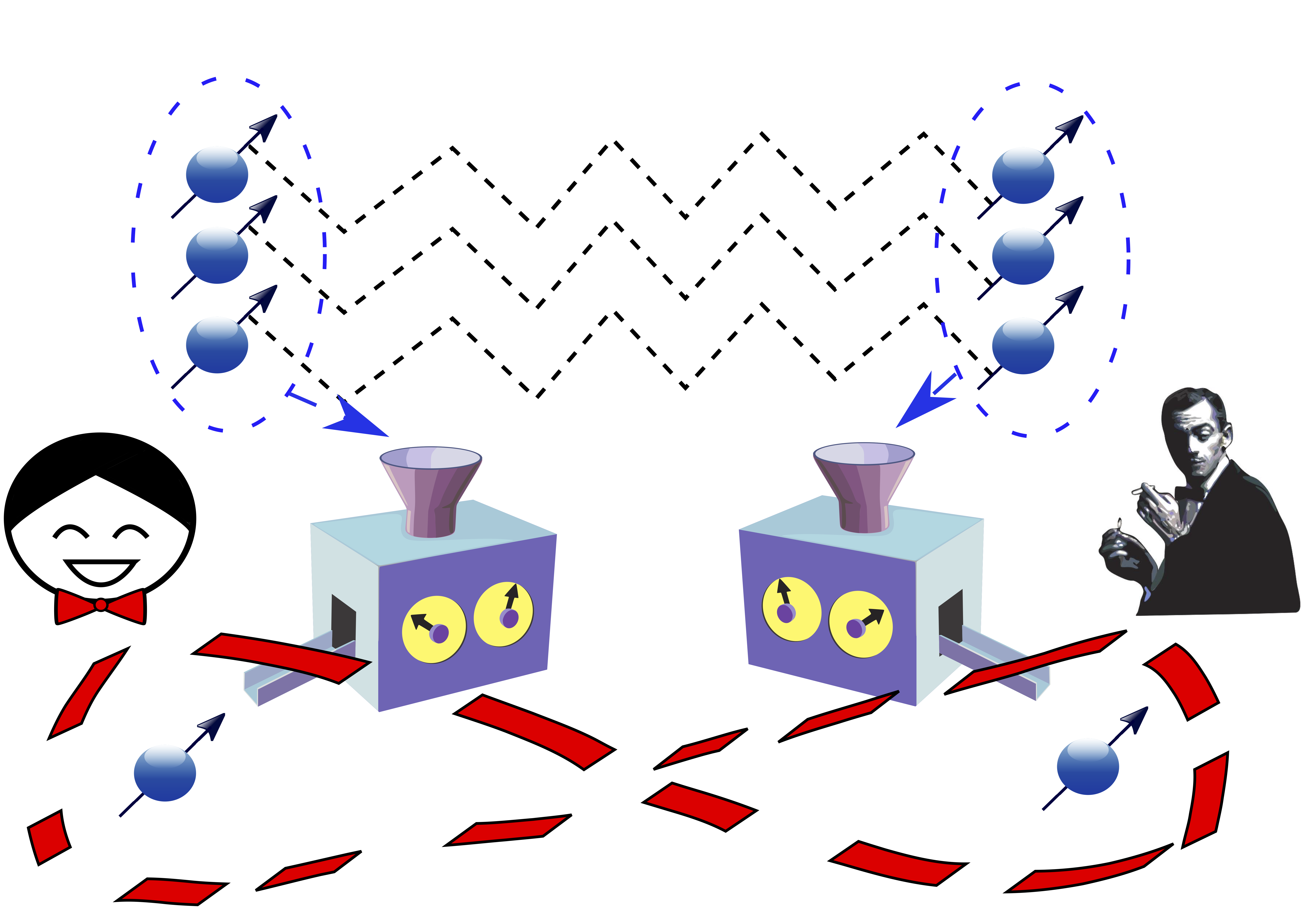13.10.2016difficulty level - Q
Climbing the Ivory Tower

by Julia Cramer
After some years of doing science in the dark basement of a physics building, one may wonder: ‘who am I?’ Searching for answers at Google Images, there turns out to be a distinct difference between the stereotypes ‘scientist’ and ‘physicist’. Surprisingly, a ‘scientist’ always wears a lab-coat plus safety glasses. The ‘scientist’ works in a clean lab environment, handling chemicals and a microscope. According to Google, the ‘scientist’ is happy and young, can be male or female, black or white.
How large is the contrast to Google’s ‘physicist’: an old, somewhat otherworldly, serious man wearing thick glasses. The man standing in front of a whiteboard is writing down equations and drawing spheres on a blackboard. It is interesting to notice that Google barely makes a distinction between ‘physicist’ and ‘professor’. Leaving behind the fact that both a ‘scientist’ and a ‘professor’ can be an academic in any kind of field, I wonder why the ‘physicist’ never conducts any experiments.
Jonas explained in his blogpost that there are two main types of physicists: the experimentalists and the theorists. While the experimentalist has a practical, slightly obsessed do-it-yourself spirit, the theorist favours to generalize and idealize. Jonas, being a theorist in QuTech, points out the advantage of a theorist by the argument ‘being cheaper than a dilution refrigerator and coming with a better sense of humour’. This seems to be an indication that theorists might feel inferior to experimentalists. Why is the public perception of a ‘physicist’ closest to the image of a theoretical physicist, while Jonas as a theorist in QuTech does not feel to be the majority of physical researchers?
Hierarchy in the Ivory Tower
For the general public, the world of the non-academics, academia is like an Ivory Tower: disconnected from the practical concerns of the outside world. For academics the Ivory Tower is a community with clear rules and hierarchy. There are students, PhD researchers, post-docs, assistant-, associate- and full professors. Moreover, at least in physics, the building itself insists on some kind of hierarchy as well.
In almost every physics building I know, the top-floor is reserved for the theoretical physicists. They occupy sunny offices with big windows, many books, and clean floors. The experimental physicists are located closely to, or rather in, the basement of the building. It is dark and dusty, but advantageously there are little building vibrations, small temperature fluctuations and there is no daylight. Most labs have big signs that shout ‘NO CLEANING’ at the entrance. All external influences that can be disturbing for experiments are minimized. Furthermore, who would forgive the cleaning staff bumping in their precious setup? When the theorists come to visit the experimentalists, they literally descend to the experimentalist’s environment.
Sheldon Cooper, the star of the most reflective TV show on physicists ever made, is a theoretical physicist at Caltech. While his best friend and flat-mate Leonard is ‘just an experimentalist’, his friend Howard is another step down, he did not even get a PhD and is ‘just an engineer’. The hierarchy in the community of physicists seems to have the theoretical physicist on top. After all, Google Images already pointed out that there is almost no difference between a theoretical physicist and a professor.
‘Realistic’ theory and ‘ideal’ experiment
In QuTech, theorists regularly descend to the experimentalist’s basements; experimentalists climb the stairs to meet the theorists in their sunny office. As an experimentalist in QuTech, I have regularly had discussions with theorists. And I recognize Jonas’ frustration about the time it takes to really understand each other. It is as if two cultures meet: two cultures with different rules, different language and different values.
A theorist generalizes as much as possible, propose a world independent of the experimental application, independent of whether my qubits are in diamond or in superconductors. I ask the theorist for realistic simulations, I wonder what the effect is of correlations between my qubits or asymmetries in my system and what my experiment is worth if I do not meet the ‘ideal’ thresholds. To simulate my experiment under ‘realistic’ noise, the theorist wants to know the full parameter space of my Hamiltonian, and asks for generalizations, to for example only include nearest-neighbour interactions: it is impossible to simulate the whole system.
Once the cultural differences are overcome, the two worlds meet in the middle, eager to learn from each other. Cutting-edge research requires a tight connection between theory and experiment. The experimentalist conducts experiments based on recent theoretical proposals. The theorist requires experimental parameters for interactions, noise and limitations to propose future experiments. The experimentalists need thresholds, protocols and figures of merit to set up or finalize their experiments. The increasing number of publications in QuTech sharing authorship between theorists and experimentalists proves that the cultures successfully manage to meet in the middle!
The third type of physicist
The two types of physicist that are discussed above do not include all physicists. At QuTech, a research institute that focuses on (far-) future technology, a third type of physicist can be observed. It is the physicist that Sheldon Cooper would indicate as ‘just an engineer’ who turns out to be vital to push the experiments to realistic applications. In the past years an increasing number of research engineers from TNO and technical staff have entered the labs of QuTech. These physicists do not follow the academic career path, they are often specialized in one technical aspect. Where the experimentalists have a hard time understanding the theorists, the engineers must have a hard time understanding the experimentalist.

The author, an experimentalist, (middle) in the presence of a theorist (right) and an engineer (left).
Compared to a research engineer, the experimentalist is not specialized in a specific task. During my PhD there has not been a single month in which I did not try something that I had never done before. From drawing a 3D design to soldering an electrical circuit; if needed, I would do it. This is the hands-on mentality of the experimentalist that often works to perform the experiment. However it might not be the most efficient and optimized solution. This is where the engineer comes in. The engineer is capable of optimising such implementations towards scalable, reusable and more general solutions. They can advise when the experimentalists need something specifically designed for their experiments. Besides the increasing number of publications in QuTech sharing authorship between theorists and experimentalists, the number of publications including engineers in the author list underlines their contribution to QuTech.
QuTech is gradually bringing the three cultures together in one community. We need some time to optimize our language-problems but then the hierarchic Ivory Tower will become one productive quantum-hive!
 Julia Cramer is an experimental physicist at QuTech, working on quantum error correction with spins in diamond. Overcoming some cultural barriers she enjoys working with both theorists and experimentalists. Besides working in the dark basements of the physics building, she loves to share her enthusiasm for everything quantum in written text and theater shows. She also blogs at Faces of Science (in Dutch).
Julia Cramer is an experimental physicist at QuTech, working on quantum error correction with spins in diamond. Overcoming some cultural barriers she enjoys working with both theorists and experimentalists. Besides working in the dark basements of the physics building, she loves to share her enthusiasm for everything quantum in written text and theater shows. She also blogs at Faces of Science (in Dutch).

